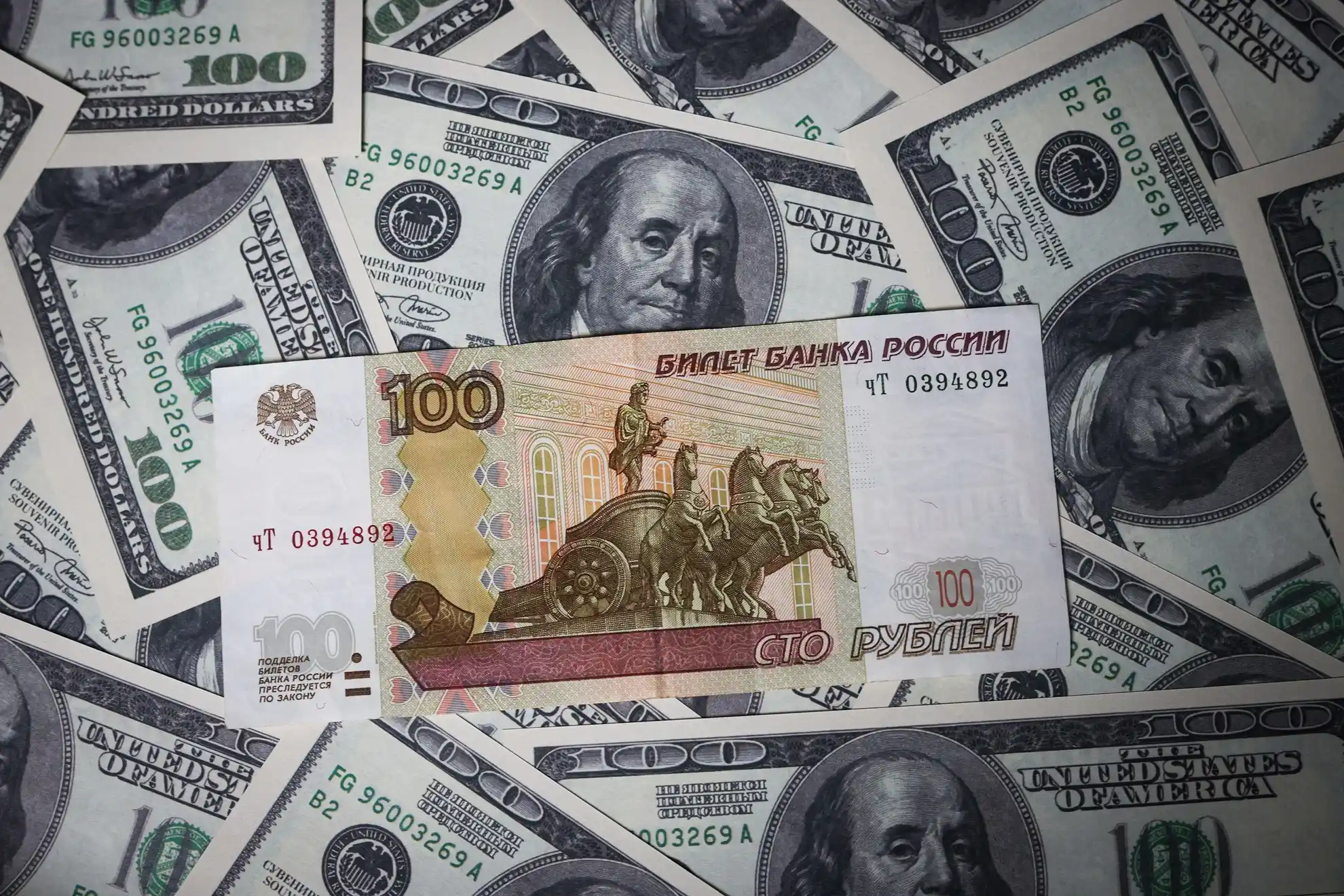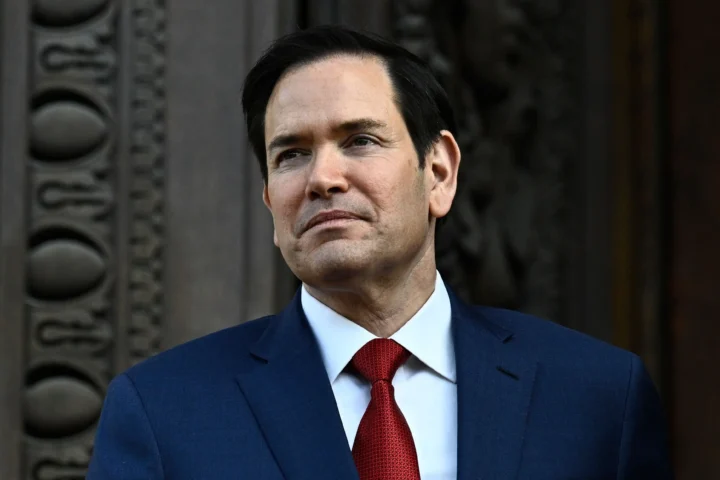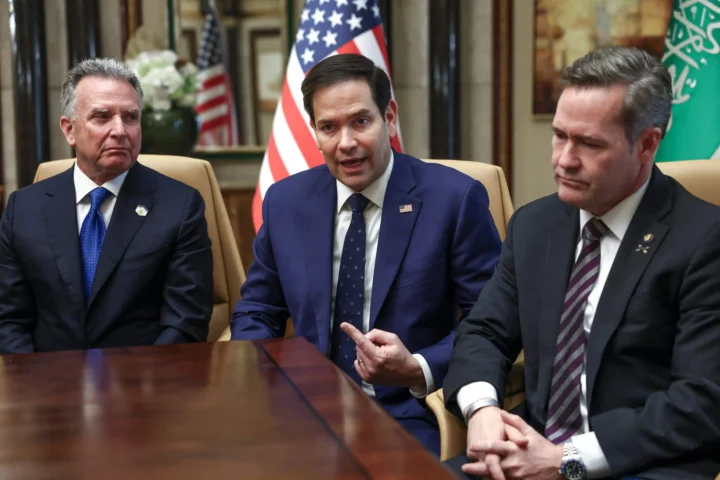In an unexpected twist on the global financial stage, the Russian ruble has emerged as the strongest-performing currency of 2025, outperforming not just the U.S. dollar but even traditional safe haven assets like gold. According to data compiled by Bloomberg, the ruble has appreciated by 38% against the dollar in over-the-counter (OTC) markets since the beginning of the year — the largest gain among all global currencies.
While the U.S. dollar continues to struggle under the weight of trade tensions, spurred by the Trump administration’s erratic tariff policies, the ruble is benefiting from a unique blend of domestic economic factors and external geopolitical shifts.
“Unlike other emerging market currencies, the ruble has not been pressured by capital flight,” said Sofya Donets, economist at T-Investments. “Capital controls have largely protected Russia from global risk-off sentiment, while the high domestic interest rates have supported the currency.”
Tight Monetary Policy and Export Controls Fuel the Rally
Indeed, Russia’s central bank has kept monetary policy extremely tight, with its benchmark interest rate at a staggering 21%. This move has sharply reduced demand for imports and foreign currencies, contributing to a stronger ruble. Exporters are also obligated to sell a portion of their foreign exchange earnings in local markets, creating consistent demand for the national currency.
These domestic dynamics have helped the ruble thrive despite ongoing Western sanctions in place since Russia’s 2022 invasion of Ukraine. While the geopolitical backdrop remains tense, the ruble’s performance has been bolstered by shifting investor sentiment and strategic macroeconomic policies from the Kremlin.
As Bloomberg Economics analyst Alex Isakov explained:
“The ruble has benefited from three main developments this year: first, the apparent thaw in relations between Putin and Trump has reduced hard currency demand in Russian markets; second, tight monetary policy has slowed consumer and corporate demand for imports; and third, the government is offsetting declining oil revenues by selling foreign currency reserves from the National Wealth Fund.”
Adding to the ruble’s momentum is renewed interest in carry-trade strategies. Investors seeking high-yielding assets are increasingly exploring opportunities in ruble-denominated instruments — often through financial hubs like Dubai or via nations maintaining strong economic ties with Russia.
Iskander Lutsko, head of research at Istar Capital, commented:
“Foreign investors are showing renewed appetite for ruble assets as they search for yield. Many are entering via countries still on good terms with Moscow, sidestepping direct sanctions exposure.”
Moreover, Russian corporations are refinancing expensive ruble loans by turning to cheaper yuan-denominated credit lines, effectively driving additional demand for rubles and boosting currency conversion from foreign currencies.
Sanctions, Budget Gaps, and Surprising Resilience
While the ruble climbs, the dollar has seen significant losses, hitting a six-month low earlier this week. Markets have been rattled by inconsistent messaging from the White House on tariffs, eroding investor confidence in the dollar’s traditional role as a safe-haven asset. As a result, gold has gained 23% in 2025 — placing it just behind the ruble in terms of performance.
Back home, the ruble has appreciated by 19% on official domestic markets, reaching a level of 82.76 to the dollar, according to the Bank of Russia. However, this figure trails the gains seen in offshore markets, largely due to exchange rate discrepancies during last year’s prolonged holiday closures, when global markets remained open.
Since the suspension of dollar trading on the Moscow Exchange following U.S. sanctions in mid-2024, most currency trading has moved to the OTC market. This shift has disrupted traditional price discovery mechanisms and led to a growing divergence between domestic and international ruble valuations.
Interestingly, the ruble’s rally caught even the Russian government off guard. The federal budget for 2025 was based on an average exchange rate of 96.5 rubles per dollar — about 14% weaker than the current rate. A stronger ruble, coupled with falling global oil prices, could reduce expected revenues from energy exports.
Despite the surprising strength of the ruble, many analysts remain cautious. A survey conducted by the Bank of Russia in March found that most economists projected an average rate of 98.5 rubles per dollar for the year.
Nonetheless, the central bank itself acknowledged in a recent policy summary that the ruble’s appreciation may reflect improving investor sentiment amid a slight easing of geopolitical tensions. The high benchmark interest rate is also considered a major supporting factor.
Looking ahead, analysts like Lutsko believe the ruble’s upward trend is likely to continue, at least in the short term:
“There are currently no strong factors pointing to a weakening ruble. A rate cut is off the table for the coming quarter.”
In an economic landscape marked by uncertainty and volatility, the Russian ruble has become a rare standout — defying predictions, bypassing sanctions, and outperforming global rivals. Whether this trend will persist depends on factors ranging from oil prices to diplomatic maneuvers, but for now, the ruble’s surprising rise is drawing global attention.
This article was prepared based on materials published by Bloomberg. The author does not claim authorship of the original text but presents their interpretation of the content for informational purposes.
The original article can be found at the following link: Bloomberg.
All rights to the original text belong to Bloomberg.



















